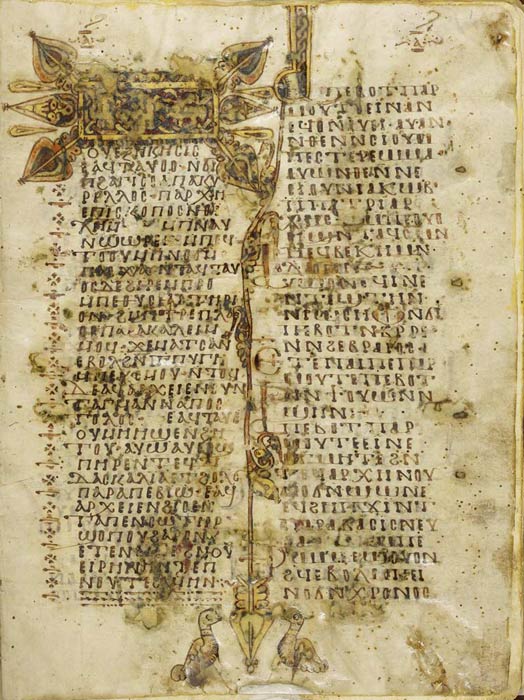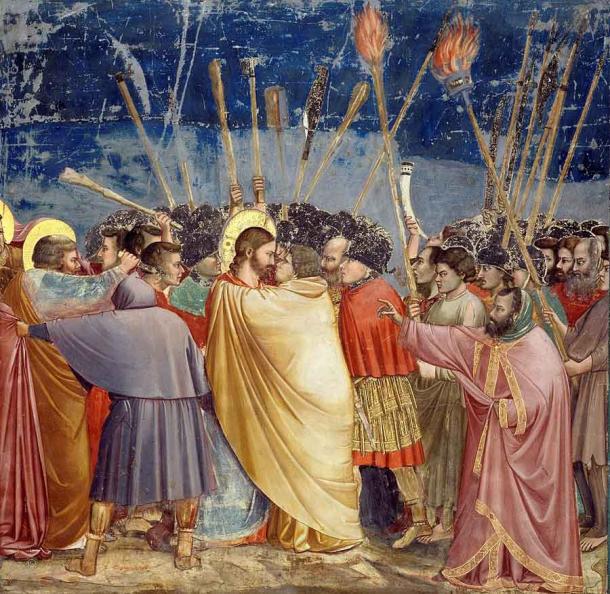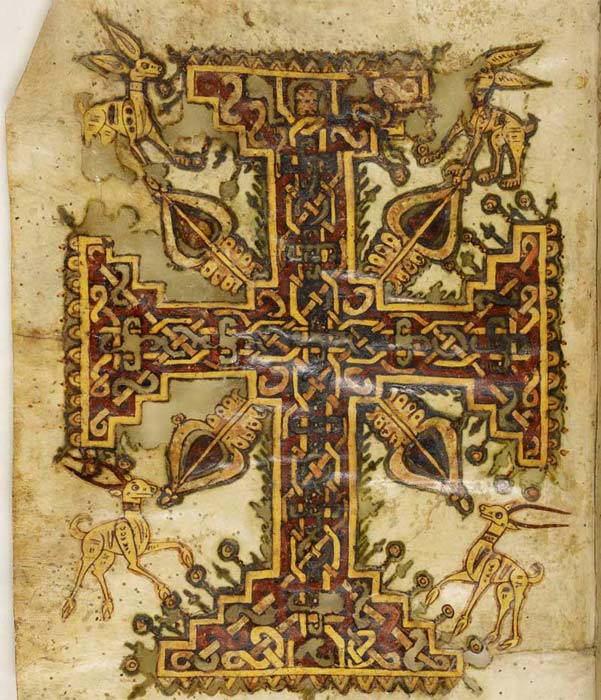
The Ancient Text That Describes Jesus as a Shapeshifter
It was in March 2013 when reports flooded the headlines about a newly deciphered Egyptian text, dating back almost 1,200 years, which controversially described Jesus as having the ability to change shape. But just as quickly as the story made its way through major news sites around the world, it disappeared and has hardly been mentioned since. Why has the study and research surrounding this text faded into oblivion? Why has there been virtually no scholarly debate on the subject of Jesus as a shapeshifter?

The Coptic text was found in 1910 and purchased by J. P. Morgan in 1911. It contains a controversial description of Jesus as a shapeshifter. (The Pierpont Morgan Library)
Judas Used a Kiss to Identify Jesus the Shapeshifter, Claims Coptic Text
Written in the Coptic language, the ancient text written in the name of St. Cyril of Jerusalem, a distinguished theologian who lived during the fourth century, tells part of the crucifixion story of Jesus with apocryphal plot twists, some of which have never been seen before. They have been revealed thanks to a translation carried out by Roelof Van den Broek of Utrecht University in the Netherlands, and published in the book Pseudo-Cyril of Jerusalem On the Life and the Passion of Christ: A Coptic Apocryphon.
- Evolving Forms: An Intriguing Look at Shapeshifting
- ‘Shape-shifter’ Slaughtered in Sumatra in the Form of a Tiger!
The ancient text explains why Judas used a kiss, specifically, to betray Jesus. According to the canonical bible, the apostle Judas betrays Jesus in exchange for money by using a kiss to identify him leading to Jesus' arrest. This apocryphal tale explains that the reason Judas used a kiss, specifically, is because Jesus had the ability to change shape.
Then the Jews said to Judas: How shall we arrest him [Jesus], for he does not have a single shape but his appearance changes. Sometimes he is ruddy, sometimes he is white, sometimes he is red, sometimes he is wheat colored, sometimes he is pallid like ascetics, sometimes he is a youth, sometimes an old man.
This leads Judas to suggest using a kiss as a means to identify him. If Judas had given the arresters a description of Jesus he could have changed shape. By kissing Jesus, Judas tells the people exactly who he is, shapeshifter or not.

Fresco by Giotto di Bondone depicting the arrest of Christ and the kiss of Judas. (Public domain)
The Idea of Jesus as a Shapeshifter is Old News
This understanding of Judas' kiss goes way back. According to Van den Broek, the explanation of Judas’ kiss is first found in Origen, a theologian who lived between 185 and 254 AD. In his work, Contra Celsum, the ancient writer stated that "to those who saw him [Jesus] he did not appear alike to all." Nevertheless, Van den Broek is careful to note that he is not suggesting that Jesus was in fact a shapeshifter, but only that some people in early Christian times may have thought he was.
The text is one of 55 Coptic manuscripts that were found in 1910 by villagers digging for fertilizer at the site of the destroyed Monastery of Archangel Michael of the Desert near Al Hamuli in Egypt. Apparently, during the 10th century, monks had buried the monastery's manuscripts in a stone vat for safekeeping.
- Shapeshifting: Shamanic Techniques for Global and Personal Transformation
- Santa the Shaman Comes to the New World: The Shapeshifting Magic-Man from the Ancient Past
The monastery ceased operations around the early 10th century, and the text was rediscovered in the spring of 1910. In December 1911, it was purchased, along with other texts, by American financier J. P. Morgan. His collections, and the text described, are now housed in the Morgan Library and Museum in New York City.

The 1,200-year-old Coptic manuscript, which describes Jesus as a shapeshifter, incorporates this cross decoration within the manuscript. (The Pierpont Morgan Library)
While headlines at the time of the announcement were quite sensationalist and described the text as containing Christianity-shattering information, the publishing scholar never claimed anything of the sort. It is also clear that the text is not a hoax but a genuine item published by a respected scholar and by a notable academic press (E. J. Brill). So why hasn’t such a fascinating text led to further research, interpretations, or discussion among scholars as relating to Jesus as a shapeshifter?
Top image: According to the ancient text, Judas used a kiss to identify Jesus due to his abilities as a shapeshifter. Source: The Morgan Library & Museum
By April Holloway
References
Jarus, O. 12 March 2013. “Shape-Shifting Jesus Described in Ancient Egyptian Text” in LiveScience. Available at: https://www.livescience.com/27840-shape-shifting-jesus-ancient-text.html
No name. No date. “Treasures from the Vault” in The Morgan Library & Museum. Available at: https://www.themorgan.org/exhibitions/treasures-from-the-vault-2013
Suciu, A. 12 October 2012. “Guest Post: Roelof van den Broek – Pseudo-Cyril of Jerusalem, On the Life and the Passion of Christ” in Alin Suciu. Available at: https://alinsuciu.com/2012/10/12/guest-post-roelof-van-den-broek-pseudo-cyril-of-jerusalem-on-the-life-and-the-passion-of-christ/
van den Broek, R. 2013. Pseudo-Cyril of Jerusalem On the Life and the Passion of Christ: A Coptic Apocryphon. Leiden: Brill.
















Comments
The Coptic texts tells us that Judas was ratting on Jesus to the authorities. He was describing Jesus (who was concealed by cloak, maybe disguised, as he knew Judas would betray him) to look like a young man, but sometimes like an old man. Not sure what is meant by shape-shifting, as it relates or not. Of course, Jesus is said to have had a light about him, which could maybe make an old man look young.
Nobody gets paid to tell the truth.
Deleted dupe.
Nobody gets paid to tell the truth.
Secular Bible students suggest that Jesus wasn’t one person (there is no archaelogical evidence of his existence, despite intensive searching) but a name assigned to the many revolutionary preachers circulating the region at that time. In this sense, he was a shape-shifter as he was actually dozens of different men. If the events at Gethsemane happened more or less as told, the elders might have believed there was only one Jesus – in any case, they clearly didn’t know what he looked like. By having this Jesus executed, the Sanhedrin created a martyr which only strengthened the revolutionary movement.
I have put together a series of attributes of Jesus that makes more sense than he actually being a real person. There is no physical evidence of his existence and his story fits in the narrative and the proof and evidence is plain to see even in these times. I would like to share it with you, but not in this public setting at this time. I am working on another book that this will be the central theme and I want to keep it to be exposed there publicly. I would like to use this article as another piece of evidence to my narrative. How can I get your official permission?
larry
Jesus is God. Why couldn't he change shapes? He changed and became a man.
Pages